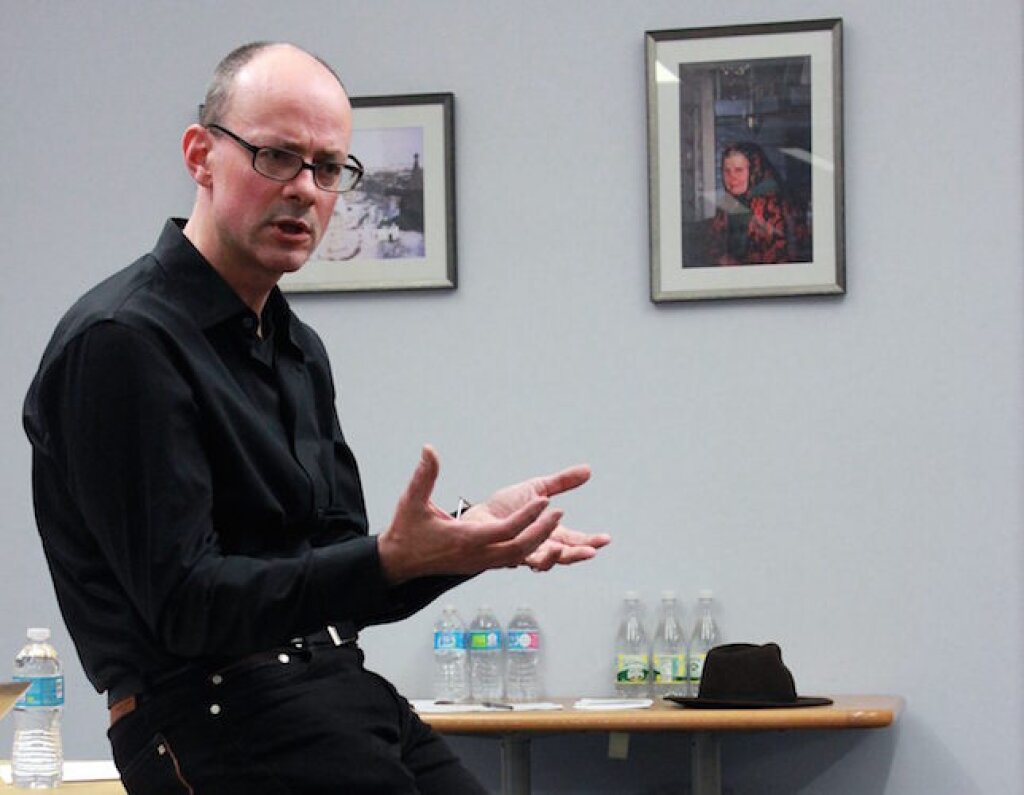On September 29th, Maria Vinogradova, a Visiting Assistant Professor at the Pratt Institute, came to discuss and impart her expertise surrounding the role of guns on film in the culture of the Soviet Union.
Vinogradova began her presentation by introducing us to the “camera gun”—a primitive camera from France which predated the film camera. The camera gun would capture many images in rapid-fire because of its rotating internal camera, and serves as proof of the inextricable symbolism of guns in film.
Vinogradova further delved into the violent symbolism of film photography and videography with a Susan Sontag quote from “On Photography” (1973). Sontag highlighted the “predatory” nature of cameras, as “to photograph people is to violate them, by seeing them as they never see themselves, by having knowledge of them they can never have; it turns people into objects that can be symbolically possessed.” Vinogradova followed this up by referencing Elizabeth Barrett’s “Stranger with a Camera” (1999). The gun and camera have been compared to one another across their shared history, but according to Vinogradova, others have compared the camera to more innocuous items such as the pen, or paintbrush. However, Vinogradova then presented an interesting dichotomy—the words that are used to describe photo “shots” in different languages. For example, “cadre” in French means “frame,” not “shot.”
Vinogradova then pivoted back to the Soviet Union and Alexander Medvedkin’s machine gun camera from 1943. The camera resembles a gun in appearance, but also apparently in usage. She explained that this imagery was common during the war era, and highlighted the ability for camera-work to not only be a form of artistic expression, but also a means of fighting the war.
Vinogradova then pivoted towards the depiction of hunters on film during the Soviet era. Covering the historical depictions of imperial officials and 19th century figures such as Ivan Turgenev as well as Soviet heroes such as Lenin, she outlines the depiction of political figures on hunts as an effort to depict power and vitality.
However, she then moves towards the thesis of “hunting with a movie camera instead of a gun” reflecting a trend towards nonviolence and leisure in post-Stalin Soviet society. Moreover, it reflects a greater emergence of environmental concerns in Soviet society, which brought about the acceptance of the idea that hunting animals might not be an essential activity. According to Vinogradova, this “kino-hunting” was symptomatic of the change of attitudes in the Soviet Union in the 1960s under Khrushchev.
Vinogradova then pushed into the later Soviet period, focusing on the ways people used cameras to capture injustices and violence. Specifically, she focused on “Bol’no” (1968) and “Ty nasha sovest’, mama” (1980), both films meant to depict the camera as a symbolic weapon through either depicting fear of cameras or depictions of camera surveillance enacting death—the most insidious aspect of cameras in the later half of the Soviet Union (and elsewhere). Ending the note on surveillance, Vinogradova rounded out her arc of cameras as weapons—from the “camera gun” to literal use of cameras as surveillance weaponry.


